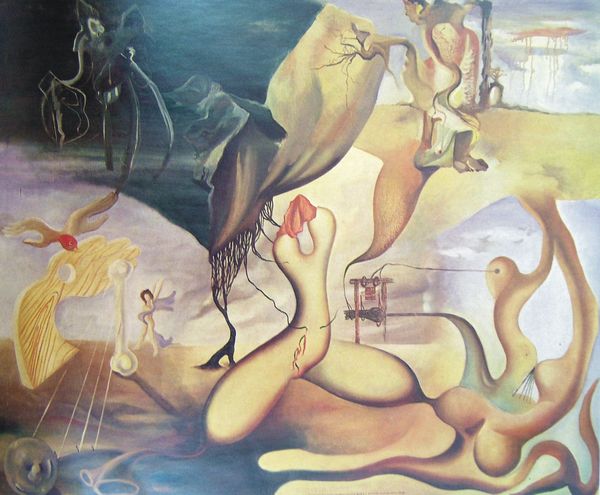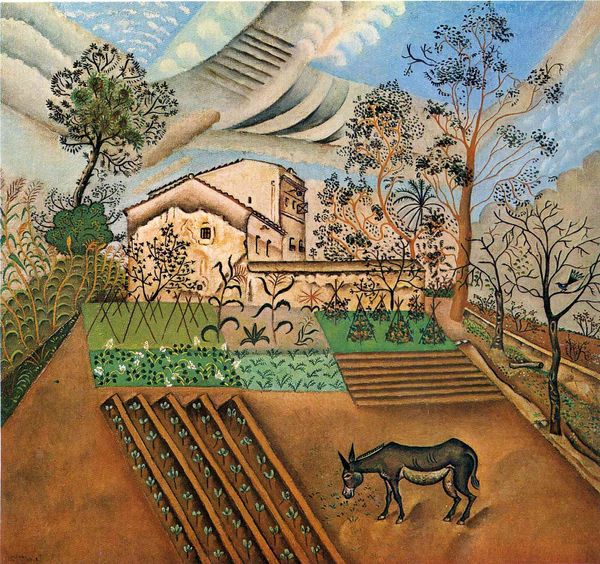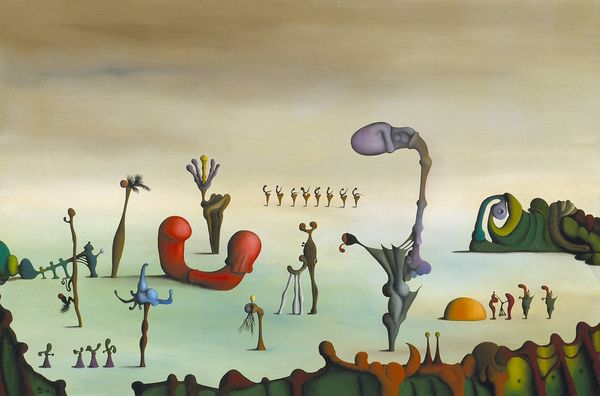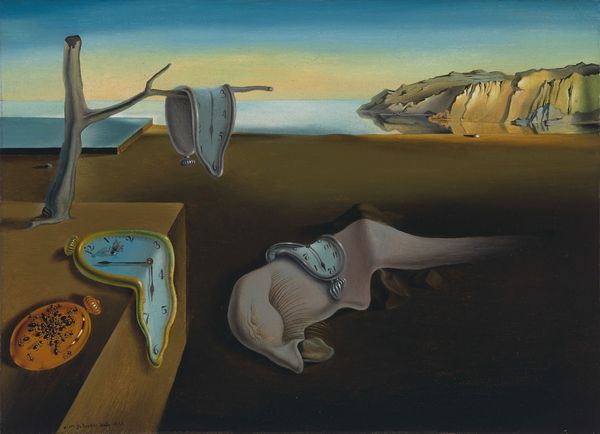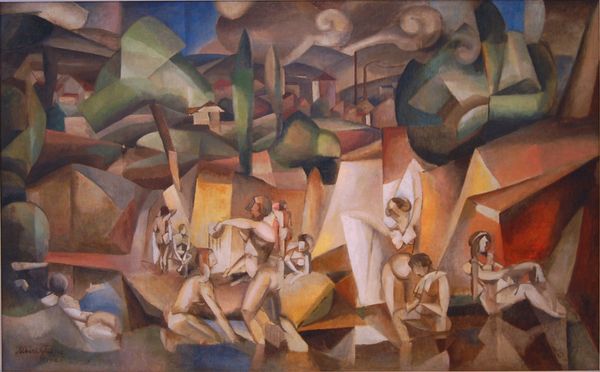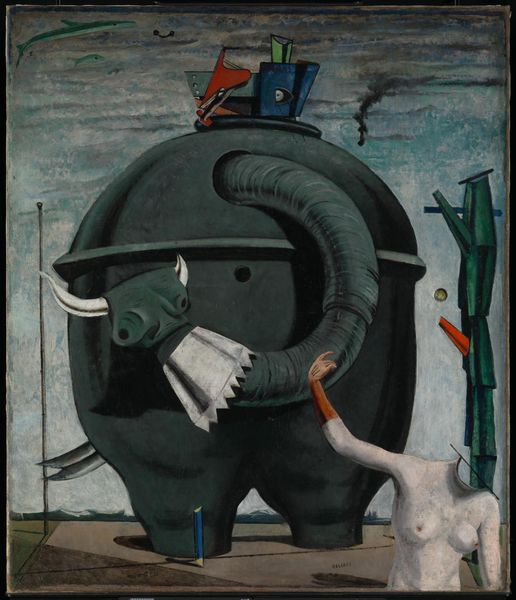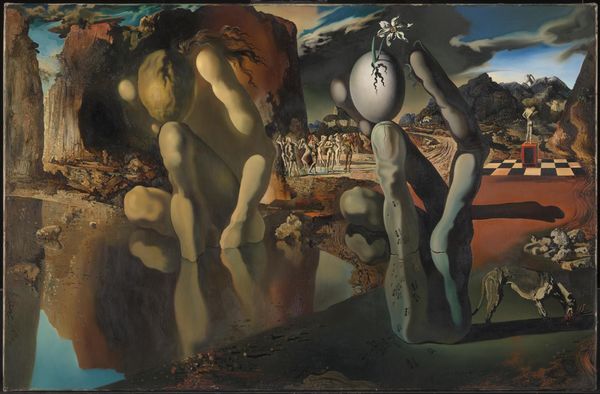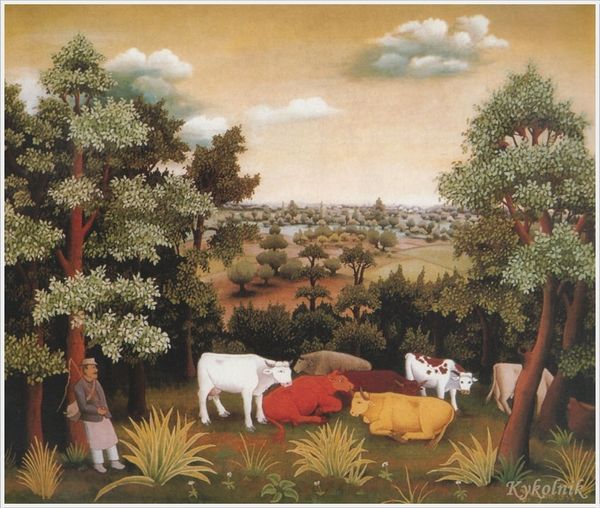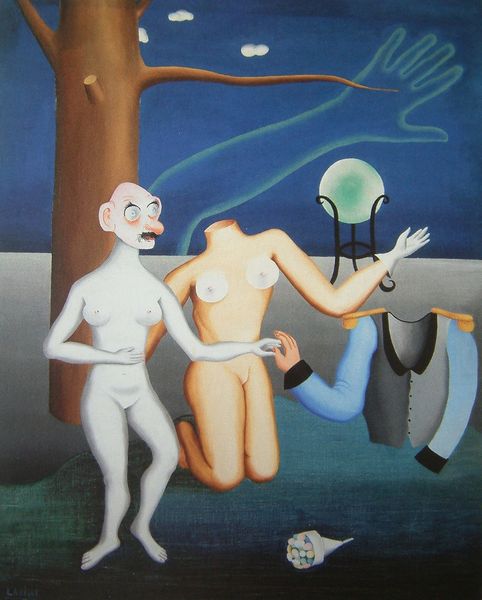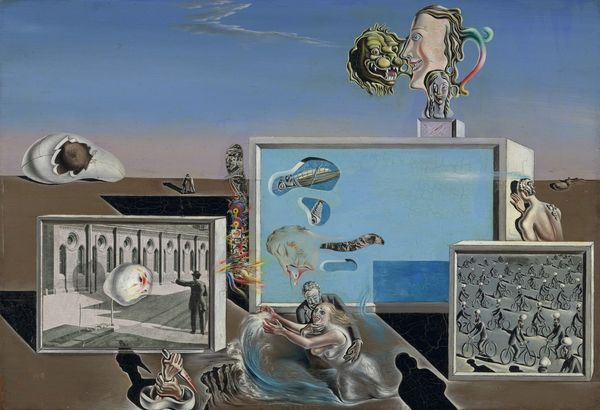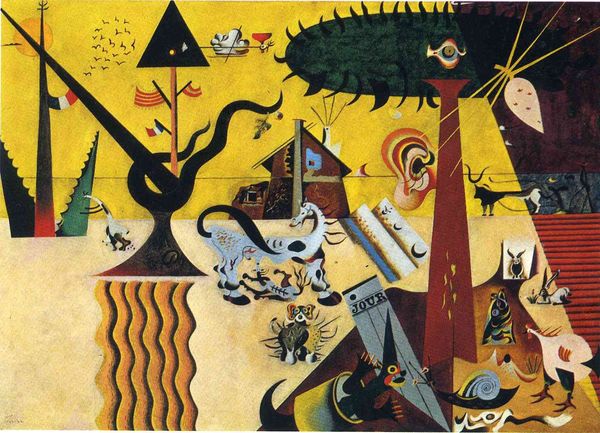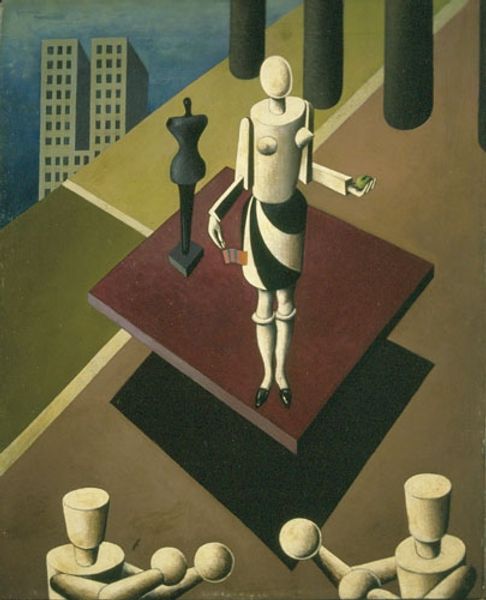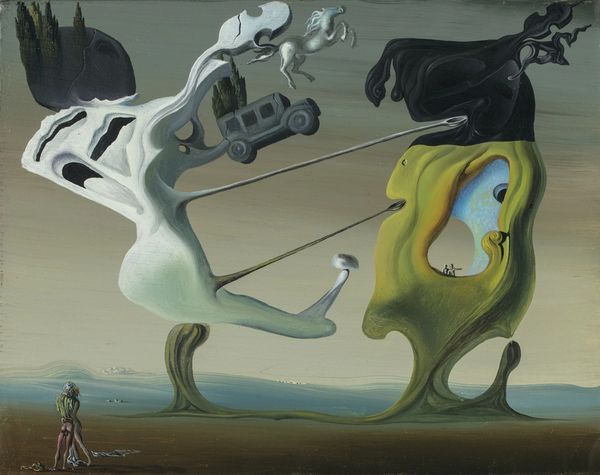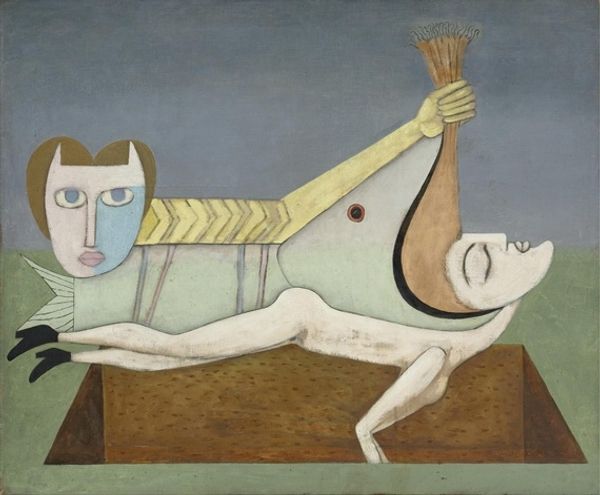
painting, watercolor
#
portrait
#
water colours
#
painting
#
watercolor
#
surrealism
Dimensions: 61 cm x 76.2 cm
Copyright: Leonora Carrington,Fair Use
Strange days! The British-Mexican painter and sculptor Leonora Carrington (1917- 2011) encapsulates the unearthly spirit of Surrealism. Her career spanned over six decades, producing an array of works united by their magical themes and bizarre imagery. Green Tea draws on medieval motifs such as stags and swords, yet handles these images with a playful touch. Carrington uses satisfying geometric shapes, seen especially in the animated trees of the background and the anatomically exaggerated animals, to infuse the painting with a dreamlike atmosphere. This idea of the irrational and unconscious is typical of Surrealist art. Surrealism flourished during the interwar period, between the early 1920s and late 1940s. Though the movement is most commonly associated with male artists such as Salvador Dali (1904-1989), René Magritte (1898-1967) and André Breton (1896-1966), women played a key role in its development. Alongside Carrington, female artists such as Frida Kahlo (1907-1954), Meret Oppenheim (1913-1985) and Dorothea Tanning (1910-2012) crucially contributed to the progression of the style. Carrington was known as a defiant and confrontational character. Alongside her participation in the visual arts, she was an active feminist and co-founded Mexico’s Women’s Liberation Movement in the early 1970s. Her revolutionary political ideas can be identified in many of her paintings, which display a radical refusal to conform to accepted traditions. How many unusual elements can you identify in Green Tea? Editor: Lucy Jude Grantham
